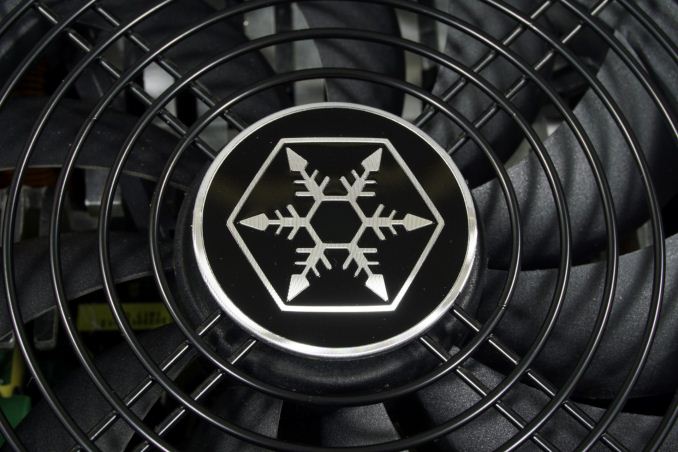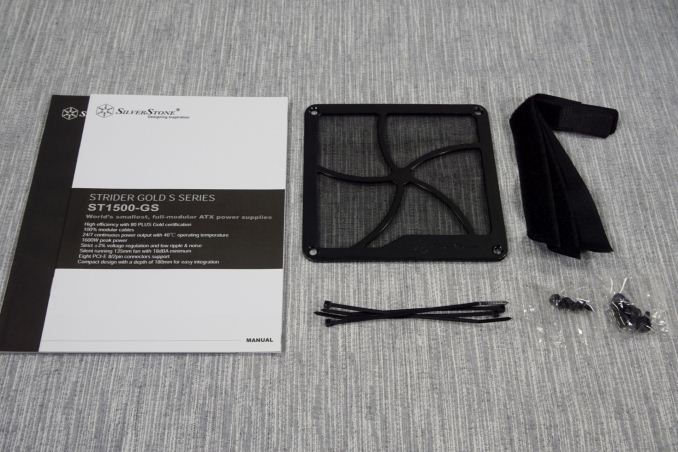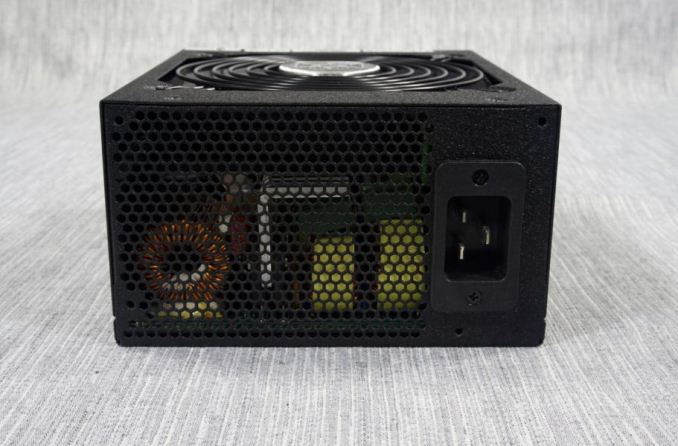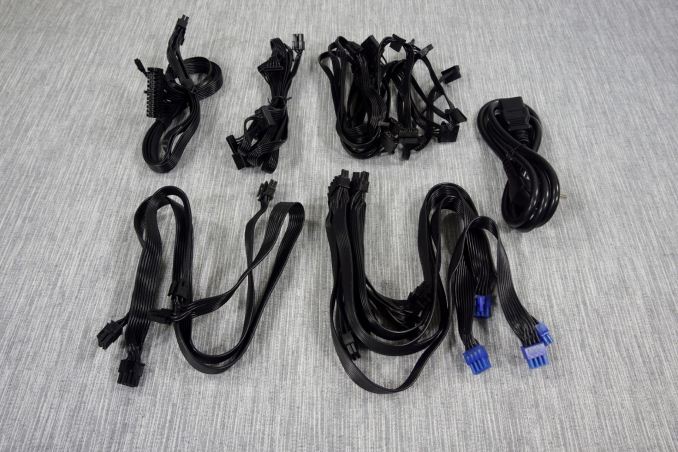The SilverStone Strider Gold S 1500W PSU Review
by E. Fylladitakis on April 7, 2015 8:00 AM EST- Posted in
- Cases/Cooling/PSUs
- PSUs
- SilverStone
- 1500W

Introduction
SilverStone is one of the most reputable PC chassis and PSU manufacturers worldwide. The company is no stranger to AnandTech as we reviewed a plethora of their products during the years. However, it has been a long time since we reviewed one of their high-end power supply units; as a matter of fact, ever since the review of the Zeus 1200W PSU seven years ago, we have only been reviewing their least powerful PSU models. As a result, SilverStone supplied us with their currently most powerful model - the Strider Gold S 1500W (ST1500-GS).
SilverStone has some very interesting things to say about the Strider Gold S 1500W PSU. These include the fully modular design, 80Plus Gold certified, compact design, strict performance standards and a frightening price tag of $350. However, what is even more terrifying is that it has been rated for continuous operation at 40°C, not 50°C like the majority of manufacturers do for their high-end models. This is not in any way illegitimate as this is the normal rating for the operating temperature of consumer PSUs and other companies do rate some of their units at 40°C as well. However, a $350 PSU rated at 40°C comes with an element of shock, especially when considering our recent review units which have also had a 40ºC limit.
| Power specifications ( Rated @ 40 °C ) | ||||||
| AC INPUT | 100 - 240 VAC, 50 - 60 Hz | |||||
| RAIL | +3.3V | +5V | +12V1 | +12V2 | +5Vsb | -12V |
| MAX OUTPUT | 25A | 25A | 70A | 70A | 3.5A | 0.3A |
| 150W | 1440W | 17.5W | 3.6W | |||
| TOTAL | 1500W | |||||
Packaging and Bundle
The packaging of the Strider Gold S 1500W PSU is modest and sturdy, with a wealth of information to be found on the sides and the back of the box. The artwork is dark and very simple, as SilverStone always prefers focusing their efforts on beautifying the product itself. Inside the box, the PSU is protected very well within a polyethylene foam shell and a nylon bag.
SilverStone provides a good bundle with the ST1500-GS, consisting of a good manual, an AC power cable, a nylon fan filter guard, a few cable ties, four long cable straps and two sets of black screws (one normal set and one set of thumbscrews). The fan filter is magnetic but it can also be screwed in place if necessary.
We should note that the AC power cable included this PSU is not a standard C13 plug but a C19 plug, as shown on the unit below.
The ST1500-GS is a fully modular PSU, down to the ATX 24-pin cable. Every cable is a sleeveless, flat "ribbon" type, made using all black wires and connectors. This includes the ATX cable and the CPU/PCI-E 12V connectors. Only the blue connectors at the PSU side of the PCI Express power cables stand out against the vantablack-like design. The ATX cable also has a 4-pin voltage sensing connector that needs to be connected to the PSU separately.














32 Comments
View All Comments
malkolm - Tuesday, April 7, 2015 - link
Maybe i missed it, but what about security features like OCP and so on?From the "power specifications" on page 1 i would asume the PSU to be a multi-rail device, of course. But is it truly a two-rail design or is it split even more?
DanNeely - Tuesday, April 7, 2015 - link
I'm curious why your full load test pulled so much current on the 3.3/5V rails. You've got them both over 90% individually; but only have the 12v rail at 78% load. Any realistic load near the full output would be skewed much more heavily toward maxing out 12V. On the mobo, USB ports are the only significant user of +5V; and I don't think there're any major users of 3.3V at all. (PCIe cards are allowed to draw upto 10W of it; but AFAIK the only ones that did were transitional models that combined an existing legacy-PCI design with a bridge chip.)More troubling is that you're drawing a total of 193W of 3.3/5V power but the PSU is only rated to give 150W combined on those rails. While it obviously didn't cause anything to fail or go out of spec; but going nearly 30% out of spec is troubling. The only justification for doing so deliberately that I can think of is if your tester couldn't go above 110A on the 12V rail; although in that case I think it should've been called out explicitly in the article.
E.Fyll - Thursday, April 16, 2015 - link
Actually, I have a much better justification for that.The only official testing procedures that exist, which are given in the methodology article, result to these minimum loads. If you had checked this article, you would see that my tester can go up to 240A on the 12V alone anyway.
I cannot lower the load to the 3.3V/5V buses without inventing my own testing methodology, in which case I would be rendering all comparisons between reviews useless and misleading. This is a general problem with very high output PSUs, the specifications go down the drain and fail to meet even basic certification standards, all in the name of massive power output. Perhaps I will consider "circumventing" this issue in my future reviews by forcing a divider once the load exceeds 1000W.
Pissedoffyouth - Tuesday, April 7, 2015 - link
Is there any hardware which could even use this amount of power?Let's say some OC'd 8 core Intel i7 or dual CPU 18 core xeons, 4x crossfired 7990s under full mining load with a 8 drive raid 5 15k RPM SAS setup, let's add some hardcore water cooling and every device in the house charging off USB.
Would this even push a kilowatt?
MobiusPizza - Tuesday, April 7, 2015 - link
The only case you are even anywhere close to using >1kW is with quad SLI/Crossfire and top end GPUs.DanNeely - Tuesday, April 7, 2015 - link
Even without overclocking even a 3 GPU system could exceed 1kw. There've been cards with rated TDPs of at least 300W; IIRC seeing 375 for something but that might've been a 3rd party dual GPU card not an official design since IIRC the PCIe spec tops at 300W.4x300W cards is 1200W, add an overclocked CPU fast ram and all the other odds and ends in a case and you could hit >1400W easily enough. (According to CPUz, my 4790k hit 145-150W at 4.7ghz with 32gb of DDR3-2400 ram under some prime95 FMA stress testing loads.)
3DVagabond - Saturday, April 11, 2015 - link
Try and get a quad sli/crossfire setup to load all 4 gpu's 100%. Not going to happen.hammer256 - Tuesday, April 7, 2015 - link
4x GTX690, a -E platform, and lots of fans would do the trick ;) Not for gaming though.hammer256 - Tuesday, April 7, 2015 - link
The PSU used for that system is a LEPA G1600, a bit cheaper than this one.rtho782 - Wednesday, April 8, 2015 - link
You can't crossfire 4 7990s, as they are dual chip already, so 2 7990s is quad crossfire, and would use less power than 4 7970s.I used to have an overclocked i7 920 (130W TDP, pushed to 4GHz so probably ~180W), 12GB ram, a few hard drives, 7970+7990 trifire, and absolute max I'd use (corsair link on an AX1500i) was ~880W.
Now, with 4970k and 980SLi, I struggle to hit ~475W.